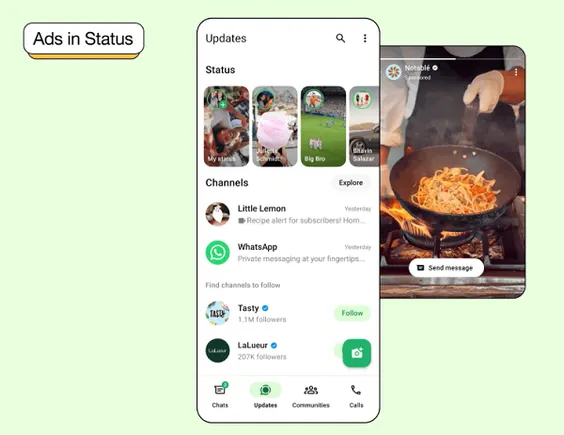How production-free footage can drive creativity and lower costs
Prerecorded and shot footage from top filmmakers is opening up a world of opportunity for creative agencies, and greatly reducing in-house production costs.

Today, despite inflation slowing over the past six months, worrisome red flags abound, from the cost of eggs to the U.S. reaching its debt limit to layoffs in the tech industry. It’s leaving those in charge of marketing and advertising budgets anxiously biting their nails. And yet, regardless of budget realities, the demand for quantity of creative is as high as ever, as is the expectation.
But a smaller budget doesn’t have to limit your vision or the quality of your creative. In fact, the creative opportunities of using licensed film footage are almost limitless.
Filmsupply has worked to distinguish itself by offering a curated catalog of cinematic content produced by a roster of award-winning filmmakers. Such brands as Apple, Nike and Mercedes-Benz, along with agencies like Anomaly, Ogilvy and Wieden+Kennedy have created content using Filmsupply’s exclusive catalog.
For example, Grammarly, the writing assistant tech company, approached Stink Studios in April 2020 to work on three different campaigns. “We weren’t conducting in-person shoots at the time, and licensed footage was a really viable solution that maintains the aesthetic and the quality standard as if we had shot it ourselves,” explained Michael Quinones, Stink’s senior creative producer. Despite having never produced an entire stock campaign using Filmsupply footage, the Stink team was able to present Grammarly with what Quinones described as a “natural, delightful surprise.”
It’s important to note, the footage found on our site isn’t shot for the purpose of being “stock,” so the production value is on a whole other level. And there’s also the option of exclusivity. Filmsupply offers bespoke degrees of exclusivity that can cover variables such as time, industry, specific scenes and more. If you’re exclusively licensing something, it’s not that different from producing it yourself—except for the price tag.
“Each clip represents thousands of dollars of people’s time, effort, craft, equipment rental, booking and—most importantly—snacks,” said Ian Watt, associate creative director at Stink. “I can reap the benefits of all of that with a click.
Consider these best practices for incorporating premium licensed footage in your creative:
1. Find consistency with a filmmaker.
When the Grammarly team came across director and cinematographer James Ballard’s catalog, which features the largest collection of footage of two people together, they let the footage inform the storytelling behind these main characters.
“It’s as if we hired Ballard to help us produce this spot,” Quinones said. “We have a very high expectation about the work that we put out across the board. The quality of the material really matters, so being able to have a bank of material to work from, by other filmmakers who have a similar type of approach to filmmaking, is an incredible opportunity.”
2. Create emotion and drive story.
Evolve Studios planned to make a single music video for Pearl Jam’s track, “Dance of Clairvoyants,” but after the group’s lead vocalist Eddie Vedder saw the first cut, he insisted Evolve expand to three videos. By blending Filmsupply footage with live performances from the band, the team was able to create a visual interpretation of the lyrics using “micro stories.”
“Every image needed to evoke some kind of emotion,” said producer Joe Bastien. “If you do it the wrong way, it just looks random. But, if you prepare the right shots together and have all these little stories, it actually starts to create something.”
3. Add production value to your project.
Initially, the music video for the rapper Nas, “Ugly,” was supposed to be one continuous shot of him and his friends driving around New York. Unfortunately, the Steadicam imagery was unstable. Instead of reshooting, editor Matt Carter took this as an opportunity to get creative.
“My first move was pulling some exterior shots and driving POVs as cutaways, so the whole thing still felt like a shot narrative of them driving,” he explained. “Then I decided I could use Filmsupply footage to show more literally what was being discussed in the dynamic lyrics at this lightning pace. Next thing you know, it’s basically the entire video.”
4. Curation matters.
Curating our roster of more than 700 filmmakers, directors and directors of photography is one of the more complicated aspects of our work. That translates into a lot of options, so be sure to share your brief with our footage research team and let them go wild. It’s a service we offer all of our large accounts for free, and one of the most undervalued aspects of our business.
While nothing will ever adequately replace the value, artistry and creativity of originally shot content from top-level filmmakers, premium licensed footage that comes from the same level of talent is a close second, especially during challenged economic times.

 Fransebas
Fransebas 





























.jpg&h=630&w=1200&q=100&v=f776164e2b&c=1)

